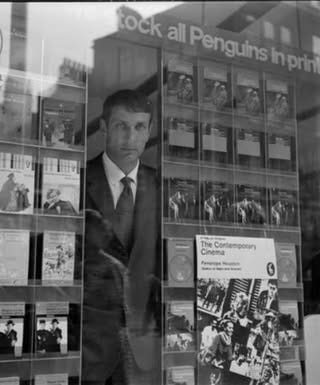Music
A little bit of rain
Karen Dalton: In my own time | BBC | Watch documentary | from 2020
Karen Dalton, a Musical Mystery That Doesn’t Need to Be Solved | The New York Times | Read article | from 2021
In My Own Time | Pitchfork | Read review | from 2006
This 2020 documentary about the singer Karen Dalton offers a compelling testament to her charisma and artistry. Her career never reached the heights of contemporaries such as Bob Dylan and Joan Baez, but the video embedded below of her singing A Little Bit of Rain at home in 1970 demonstrates how her unique style more than matched their best work.
If you’re looking to dive in, the 50th Anniversary re-release of her album In My Own Time is a good place to start.
Design
Germano Facetti | Alice Rawsthorn | Visit Instagram
Alice Rawsthorn’s Instagram page is reliably interesting, as is Design Emergency, an account and podcast which she runs with Paola Antonelli. This series of posts on the designer Germano Facetti caught my eye. It covers his career before, during, and after his work directing the design of Penguin books during the 1960s and early 1970s.
post 1 introduces Facetti’s life, and the series
post 2 covers his early life and experience in WWII in Italy
post 3 covers his arrival in London and early design career
post 4 covers his move to Paris and friendship with avant-garde French film makers including Agnès Varda (see Carnet. Issue 7)
post 5 covers his arrival at Penguin as cover art director in 1960
post 6 expands on his career at Penguin, including on the Penguin Modern Poets series
post 7 concludes the series with a look at his later career work after leaving Penguin
To complement Rawsthorn’s posts, this page on Penccil curates a large selection of book cover designs produced during the period Facetti was in charge.
Art
“The Wonder of Art”
National Gallery rehang review – ‘A momentous retelling of the story of art’ | The Guardian | ★★★★★ | Read review
The National Gallery’s rehang is a fine achievement — proof that it is a sanctuary of beauty | The Financial Times | Read review
The remodelled entrance has suffered from comparisons to an airport and a car park, but the accompanying “once-in-a-lifetime” rehang of the National Gallery in London, has been well received across the press, from papers including the Evening Standard, The Telegraph, FT, The Guardian, and The Times (still positive, but less effusive than others), to art world publications such as Apollo and Artnet.
The Guardian has a nice take on the subtle shift in focus engendered by the rehang:
The National Gallery used to tell a traditional textbook tale of art that began when perspective was “invented” in early 1400s Florence. This rehang involves a momentous retelling of the story. We now begin in Bruges with Van Eyck, which helps define the great leap forward in the Renaissance in a simpler, more human way as the discovery of the real world. You see it happen all around you as Rogier van der Weyden watches a grey-faced corpse being exhumed, a follower of Robert Campin spies on the Virgin as she breastfeeds Christ and Hans Holbein gazes into the eyes of a squirrel.
This northern Renaissance route runs right down one side of the Sainsbury Wing (or aisle, if you like the supermarket metaphor) and leads to 16th-century Basel where Holbein met the humanist theologian Erasmus. His portrait of Erasmus, a gentle half-smile on his scholarly face, is hung next to paintings that share Erasmus’s witty imagination by Bruegel, Bosch and Matsys.
We’ve gone from art discovering how to depict people as people, to portraying inner lives. This is the story the National Gallery tells, now more clearly than ever.
The Financial Times ends with a telling metaphor for what the gallery can offer, and what their new approach emphasises:
“It’s a marathon, they’re all still running” was how the late Frank Auerbach described history’s great painters to me last year…
…That sense of a baton passed on is a glory of the National Gallery’s comprehensive yet taut collection. Its sensitive, intelligent rehang tells, as Finaldi wanted, “stories across time, how pictures served generations” — and still do.



